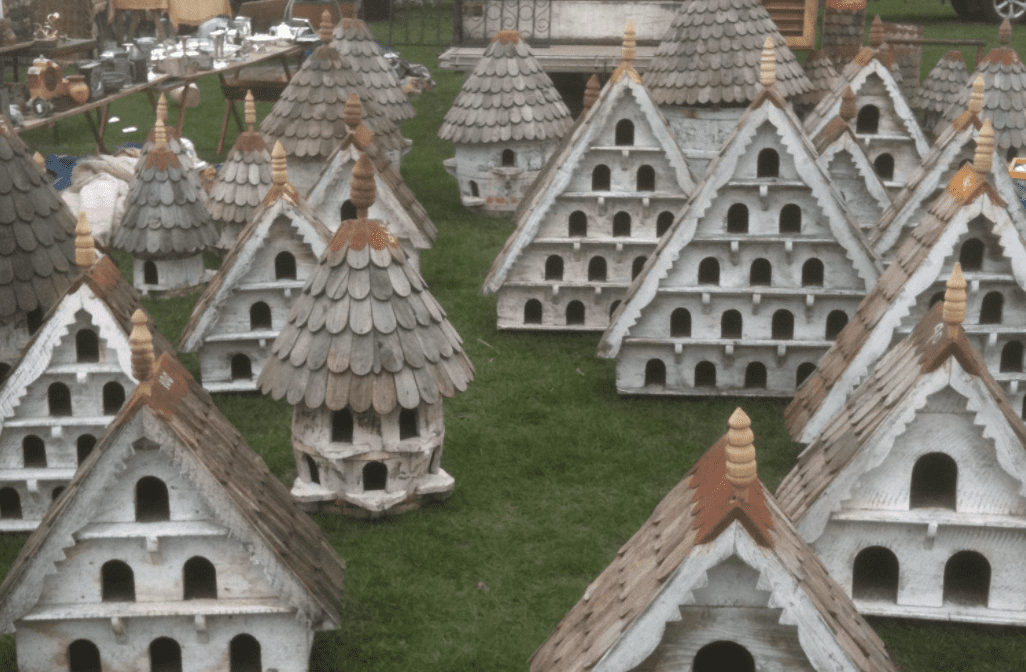
by Pigeon Patrol | Dec 27, 2020 | 4-S Gel Bird repellent, Animal Deterrent Products, Bird Deterrent Products, Bird Netting, history of pigeons, Pigeons
What Are Dovecotes?
Dovecotes, Commonly known as:
Pigeon houses, columbaria, culver houses, pigeon cotes, dove houses
A dovecote or dovecot, doocot or columbarium is a structure intended to house pigeons or doves. Dovecotes may be free-standing structures in a variety of shapes, or built into the end of a house or barn. They generally contain pigeonholes for the birds to nest.

Widcombe Manor Farm Dovecote
Dovecotes were a common sight throughout Britain and across mainland Europe between the 16th and 19th centuries, but today few remain and of those that do, many are now in ruins. Dovecotes are specially constructed pigeon houses where pigeons were kept for a variety of purposes, but in the main as a source of food. Other uses for the domesticated pigeon were as quarry for falconry and as a target for shooting matches that were common in the 19th century and in which as many as 120 birds were shot for sport in each match. Dovecotes can be constructed of virtually any material (although early dovecotes were constructed exclusively of stone) and can be free-standing structures or provided as part of an existing structure or as a ‘lean-to’ addition.

Ancient Dovecote at Embleton
The earliest dovecotes may have been introduced to Britain by the Romans based on the fact that pigeon rearing was common in Italy with dovecotes being provided close to villas and farmsteads for the purpose of food. Over half a century ago C.D. Chalmers suggested that a number of unexplained foundations on Roman sites in Britain were the remains of ancient dovecotes, but his views have never been corroborated. Due to the lack of any firm evidence that dovecotes were introduced into Britain by the Romans it is likely that it was the Normans that first introduced the dovecote and as a result domesticated the rock dove from which the feral pigeon of today is descended.
One of the earliest British examples is believed to be a 12th century dovecote that was uncovered during archaeological works in Raunds, Northamptonshire. This early dovecote is circular and commonly known as a ‘rubblestone dovecote’. A number of these early rubblestone dovecotes, dating back to the 12th and 13th centuries, have been uncovered throughout southern England in recent years and with quite a significant geographical spread ranging from Devon in the south-west through to Lincolnshire in the east. These early dovecotes were built mainly to service the culinary needs of monasteries, castles and manors but were the sole preserve of the wealthy and almost certainly beyond the means of the poor. In Medieval and Norman times the building of a dovecote was a feudal right restricted to lords of the manor, abbots and barons with these privileges eventually extending down to the humble parish priest. Today very few of these structures remain intact.

Much Marcle Dovecote
It was in the 16th century that dovecotes became popular in Britain with a huge variety of different designs and types being constructed. Ancient dovecotes are believed to be round in shape but later in the 17th century square, rectangular and octagonal dovecotes were built, some with incredibly intricate designs. Further designs and types include ‘lectern’ dovecotes, ‘in and out’ dovecotes, ‘polygon’ dovecotes and even caves have been adapted for the keeping of domesticated pigeons. Lectern dovecotes are shaped like a reading desk, hence their common name, and normally consisted of a 4-sided building with a single pitched roof with raised parapet walls on 3 sides. In and out dovecotes, sometimes known as Irish dovecotes, consisted of tiers of breeding cubicles together with perching ledges that were built into the exterior wall of a house or building. Polygon dovecotes (polygon, in this context, meaning a building with more than 5 sides) are more often than not octagonal structures ranging dramatically in size and often housing large numbers of birds. Caves, both coastal and inland, have been used to house domestic pigeons but their use is less common than the conventional dovecote.

Breeding Cubicles,
Shobdon Court Dovecote
The interior of a dovecote is usually a large open space with the breeding cubicles or ledges being offered in rows around the internal walls. Pigeons would enter the dovecote in a variety of ways, depending on the size, shape and type of structure, with the most common entry/exit point (known as the flight entrance) being provided beneath a cupola on the roof of the structure. The birds would be encouraged to roost and breed within the structure and as pigeons are quite prolific breeders, bringing up to 8 young into the world each year, competition for breeding cubicles would be high.
As the main purpose of a dovecote was to provide food, and as the pigeon squab (or chick) was seen as a delicacy, squabs would be ‘farmed’ when they achieved a certain age and size (normally 4 weeks of age). In the 16th century eating pigeon meat became much more popular with ‘pigeon pie’ becoming a delicacy and often described as ‘food fit for kings’ – this rather dispels the myth that pigeons are disease carriers! As a result of this popularisation, pigeon meat not only graced the tables of the monarchy and the rich, it became a standard food for the masses and it was commonly said that every family should eat squab at least once a week. Some squab ‘farms’ were believed to house anything from 10,000 to 30,000 birds to satisfy this demand.

Cross-section of
Classic Dovecote
In order to access breeding cubicles and remove squabs an ingenious system had to be designed based on the inaccessibility of nests and the sheer height and size of some of the larger dovecotes. For smaller dovecotes a free-standing ladder was used for access but for larger structures a ‘potence’ was used, although more commonly for round rather than square or rectangular dovecotes. The potence consisted of a large vertical wooden pole situated in the centre of the interior and which was pivoted both at the base and at the top, allowing the pole to rotate 360°. Several lateral arms were joined to the vertical post at right angles to which ladders were attached. As the main pole was rotated the lateral arms and ladders also rotated around the interior allowing access to all the breeding cubicles.

Dovecote at Godminster
Although the provision of food was the main purpose of the dovecote, there was one interesting and highly valued by-product that had a dual purpose – pigeon guano! Pigeon guano was, and still is, considered to be one of the finest fertilisers in the world and was a highly prized commodity as a result. In the Middle East (where eating pigeon flesh was forbidden) dovecotes were built simply to provide manure for growing fruit and this practice continued for centuries. In France, Italy and Spain guano was used extensively on hemp crops and for the fertilisation of vineyards and in England it was considered to be an extremely potent manure. It was often said that pigeon guano was worth 10 loads of other sorts (manure).

Dovecote at Weetwood Hall
In the 16th century pigeon guano was sought after for a different reason – it was found to contain saltpetre, which was used for the manufacture of gunpowder. This secret was brought across from Germany and sold for a payment of £300, which would have been a huge sum in those days. This dramatically changed the role of the dovecote in light of the fact that guano was potentially valued more highly than the birds themselves and to protect this resource armed guards were often placed outside dovecotes to stop thieves stealing the guano. Production of saltpetre from pigeon guano ended in the late 18th century when it was found to be naturally occurring in South America.

Dovecote at Kings Pyon
Although the commercial use of dovecotes died out in the 19th century with many magnificent examples being allowed to fall into disrepair due to neglect, they have experienced something of a re-birth in the 21st century with dovecotes being used for the control of the feral pigeon, a direct descendent of the domesticated dovecote bird. Dovecotes and pigeon lofts are now commonly used for the control of the feral pigeon in towns and cities all over the world, with the notable exception of the USA.
The principle of using a dovecote (or pigeon loft) as a pigeon control option was pioneered by the Pigeon Control Advisory Service International (PiCAS International) and can be loosely described as a form of birth control. Pigeons are encouraged into a dovecote by the provision of a dedicated public feeding area, sited immediately beside the dovecote, where the public will be asked to feed the birds at the same time as being asked to cease feeding elsewhere. Pigeons will then take up residence in the dovecote (based on the close proximity of a good reliable food source) and once breeding starts all eggs are removed, as laid, and replaced with dummy eggs. Where a pigeon loft is used for the purpose of control rather than a dovecote the facility would be sited on the roof of a building or even within the roof of a building, rather than at ground level. Pigeons would be encouraged into the loft by the provision of food and once breeding starts eggs would be removed and replaced in the same way as with a dovecote facility.

Bailiffscourt Dovecote
This humane, effective and cost effective method of control is rapidly replacing the extreme use of lethal control, commonly used to control pigeon populations in the 21st century. Schemes using dovecotes, or artificial breeding facilities as they are now commonly known, have achieved staggering results where provided as a control option, often reducing pigeon flock size by as much as 50% and in some cases by as much as 95%. Pigeons will readily use a dovecote facility for the purposes of breeding and providing that some basic rules are followed this method of control, based on a concept that is more than 1000 years old, will provide any property owner or local government body with a cheap, popular and highly effective means of controlling feral pigeon populations. Source
About Pigeon Patrol:
Pigeon Patrol Products & Services is the leading manufacturer and distributor of bird deterrent (control) products in Canada. Pigeon Patrol products have solved pest bird problems in industrial, commercial, and residential settings since 2000, by using safe and humane bird deterrents with only bird and animal friendly solutions. At Pigeon Patrol, we manufacture and offer a variety of bird deterrents, ranging from Ultra-flex Bird Spikes with UV protection, Bird Netting, 4-S Gel and the best Ultrasonic and audible sound devices on the market today.
Contact us at 1- 877– 4– NO-BIRD, (604) 585-9279 or visit our website at www.pigeonpatrol.ca
Pigeon / Pigeon Patrol / Pigeons Roosting / Vancouver Pigeon Patrol / Bird Control / Surrey Pigeon Control / Pest / Vancouver Pigeon Blog / Birds Inside Home / Pigeons in the cities / Ice Pigeons/ What to do about pigeons/ most common types of sparrows , Damages Caused by Sparrows, How To Keep Raccoons Away, de-fence, What Are Dovecotes?
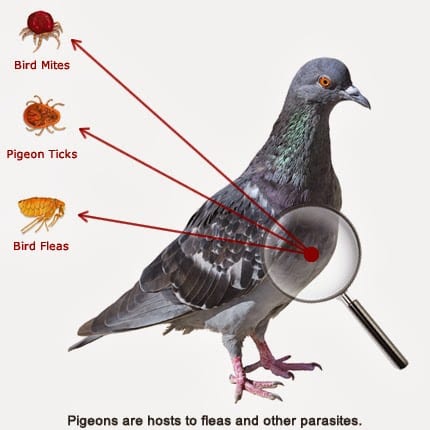
by Pigeon Patrol | Nov 5, 2020 | Animal Deterrent Products, Bird Deterrent Products, Bird Netting, Bird Spike, Bird Spikes, Columbidae, Doves, Pigeon Droppings, Pigeon Patrol's Services, Pigeon Spikes
Are There Any Myths About The Pigeon? Yes.
If you want to find out what the myths are about the pigeon, then keep on reading!
1. Pigeons All Look Pretty Much Alike
his is definitely a misconception about these ubiquitous birds. Pigeons are common in so many places around the world that they tend to blend into the scenery. But take a closer look and you’ll see a huge variety of colors and patterns among pigeons. In fact, there are dozens of distinct color variations, including red, white, blue-black and gray, according to the Cornell Laboratory of Ornithology.
Much of the variation in pigeon coloring is due to selective breeding throughout history by people who have collected pigeons for their feathers. This should come as no surprise since these animals have been cohabitating with humans for 5,000 to 10,000 years, often as pets, messengers or human sustenance.
2. Pigeons are secret spies
Despite sounding like part of a conspiracy theory, this pigeon myth is actually rooted in a measure of truth. Pigeons have been used by governments and militaries around the globe for centuries, and many pigeon activities have proved quite critical in espionage operations. For example, before the widespread use of satellite imagery, pigeons would be fitted with tiny cameras and flown over enemy territory on information-gathering exercises.
They’ve also been used extensively as messengers — the birds would carry critical notes between military installations even as late as World War II. That being said, it’s extremely unlikely that the pigeons you feed at the local park are working undercover for a foreign government.
3. Pigeons Can Fly Thousands of Miles Per Day
Based on the incredible flying abilities of pigeons, stories about their winged performance have been greatly inflated over the years. For example, pigeons have a remarkable ability to find their way home, but not from halfway around the world — as legend would have it. The truth is still impressive. Pigeons are able to navigate home across hundreds of miles using the sun, the Earth’s magnetic field and landmarks such as tall buildings.
There are also many tall tales about pigeons traveling more than a thousand miles in one day — sometimes many thousands. This is an exaggeration. The truth is that racing pigeons fly between 40 and 50 miles (64 and 80 kilometers) per hour, with the top performers covering a maximum of about 600 miles (966 kilometers) in a single day, according to the Solar Center at Stanford University. So while these stats are remarkable, pigeons are not the superheroes that many mythmakers would have you believe. Source
Pigeons can fly far, but not that far. Still, 600 miles in one day is pretty impressive.
4. Pigeons Are Warmongers
There are plenty of references to pigeons in modern society. People can be pigeon-toed or pigeon-holed, or even act as stool pigeons. If you’ve ever wondered why pigeon-themed parlance plays such a central role in human culture, look no further than your local playground or shopping center. These birds are everywhere.
Because pigeons thrive in man-made environments, they’ve become extremely common wherever there are people. In fact, pigeons are abundant in Europe, Asia and Africa, as well as throughout North America. In addition to being the subjects of legend and lore, these creatures are also the focus of a lot of misconceptions. Check out our list of the most common myths about pigeons, and perhaps you’ll learn a thing or two about our familiar feathered friends.
5. Pigeons and Doves Are Divine
Again, this myth is difficult to discuss rationally, but we felt we had to include it in the list since pigeons and doves (same family, different species) appear so often in scripture and the writings of the ancient world. Whether serving as sacrifice in Jewish tradition or as Noah’s messenger on the ark, pigeons and doves play a central role in the lore of the world’s religions.
Pigeons and doves also represent peace, purity, faith and fidelity in numerous cultures around the world. Why the birds hold such a sacred place in human societies is difficult to discern, but pigeons are no more or less likely than other animals to guide us to the hereafter. Pigeons have been associated with a variety of diseases, including histoplasmosis and cryptococcosis. Histoplasmosis is a disease caused by a fungus that grows in pigeon droppings. The fungus can also be found in bat droppings or in the soil, and is carried by the wind.
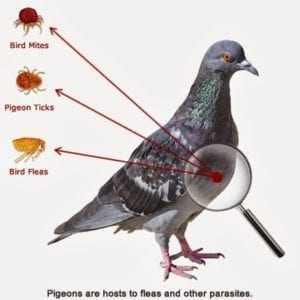
About Pigeon Patrol:
Pigeon Patrol Products & Services is the leading manufacturer and distributor of bird deterrent (control) products in Canada. Pigeon Patrol products have solved pest bird problems in industrial, commercial, and residential settings since 2000, by using safe and humane bird deterrents with only bird and animal friendly solutions. At Pigeon Patrol, we manufacture and offer a variety of bird deterrents, ranging from Ultra-flex Bird Spikes with UV protection, Bird Netting, 4-S Gel and the best Ultrasonic and audible sound devices on the market today.
Contact us at 1- 877– 4– NO-BIRD, (604) 585-9279 or visit our website at www.pigeonpatrol.ca
Bird Gone, Pigeon Gone, Seagull Gone, Pigeon problems, 1-877-4NO-BIRD, 4-S Gel, Bird Control, Pigeon Control, bird repellent,, sonic bird repellent, stainless steel , bird spikes Vancouver, Ultra Sonic Bird Control, Bird Netting, Canada bird deterrents, Pigeon Pests, B Gone Pigeon, Pigeon Patrol, pest controller, pest control operator, pest control technician, Pigeon Control Products, humane pigeon, pigeon deterrents, pigeon traps, Pigeon repellents, Sound & Laser Deterrents, wildlife control, raccoon, skunk, squirrel deterrent, De-Fence Spikes, Dragons Den, Canada bird spikes, Canada pigeon, pigeon control, pigeon patrol, pigeon. destroy pigeons, crow, starling, Pigeon Habitat, Pigeon identifications, pigeon myths
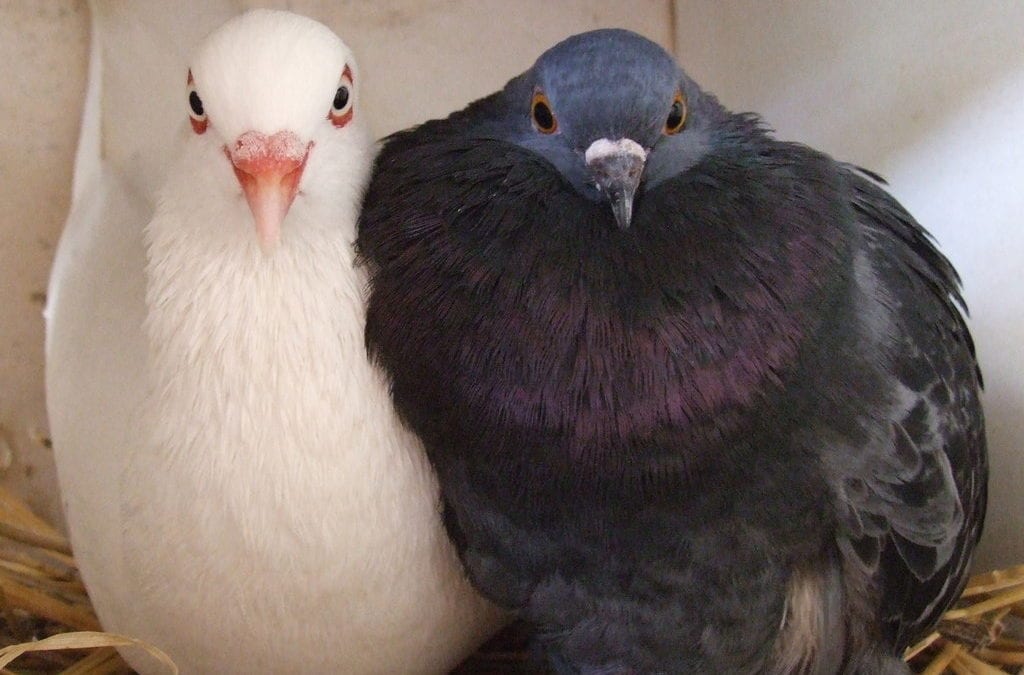
by Pigeon Patrol | Nov 4, 2020 | Columbidae, Doves, Pigeon Control, Pigeons, Pigeons in the News
Looking to learn the differences between pigeons and doves?
Well, look no further, because you’re in the right place!
In this blog you’ll learn:
- Size and Appearance of Doves and Pigeons
- Are Doves and Pigeons Considered Pests?
- Cultural Significance of Doves and Pigeons
- Pest Control for Pigeons
- FAQ
What Are Their Differences In Size And Appearance?
Doves and pigeons are both members of the family of birds known as Columbidae. They are similar in many respects, but there are still some noticeable differences between them.
Doves
Doves are smaller than pigeons. Some weigh as little as 22 grams (less than an ounce). The most noticeable aspect about them is their pointed tail.
The most plentiful breed of doves in America is the mourning dove or rain dove. They typically range in size around 12-inches in length and weigh between 4 and 6 ounces.
The head is rounded with a distinctive crescent-shaped area of dark feathers under each eye. They are a light grayish-brown color with lighter, pink coloration underneath, and a dark speckling on their wings.
They are strong fliers, capable of reaching speeds up to 55 mph. At takeoff and landing their wings make an unusual whistling sound, a phenomena known as sonation, the deliberate production of sounds without using the throat or vocal cords.
The adult males have some bright purple-pink patches on the sides of their neck, along with light pink coloring reaching the breast. On the crown of their head is distinctly bluish-grey in color.
The female, by contrast, is a bit smaller than the males and instead of the male’s bright plumage have more brown coloration overall.
Doves eat seeds almost exclusively and prefer open or semi-open habitats such as prairies, grasslands, and lightly wooded areas while avoiding swamps and thick forests.
They are generally monogamous and both parents participate in feeding and caring for their young. After a noisy courtship flight, the male will lead the female to several potential nesting sites in various trees until she chooses one, then helps her build the nest.
She normally lays two eggs and one or the other of them always remains with the eggs, then later with the young until they’re mature.
Doves will put on a broken-wing display in order to distract a predator who is approaching the nest and their young. They do this by fluttering about on the ground as if they’re helpless or injured, then flying away when the predator gets close.
Pigeons
Pigeons are larger than doves and have a rounded tail instead of a pointed one. They are usually 13-inches or more in length and can weigh as much as 4kg (8.8 pounds).
The most common variety of pigeons are the rock pigeons. They’re usually light gray on their upper body and belly, with a darker gray on their head and breast.
They can be identified by the distinctive iridescent purple and green coloration on their neck and breast. They’re not native to the United States. They were introduced into America from Europe in the 1600’s. This means they have no natural predators to limit their population.
Homing pigeons were selectively bred from rock pigeons to take advantage of their innate ability to find their way home over incredibly long distances. This ability is believed to be a function of magnetoreception, the ability to use the earth’s magnetic field to navigate.
Their long-distance flight speed (over distances of 400 miles) has been clocked at 50 mph sustained speed, but they can go as high as 90 mph in racing contests.
Rock pigeons have been domesticated for thousands of years, as food and as message carriers. The males are usually larger than the females and stand taller.
They have larger beaks, with eye cores (fleshy growth around the eyes), round heads and thick napes. Females, however, are shorter with smaller beaks and ceres. They have flatter heads and larger breasts than the males.
Courtship rituals are noisy. The male will puff out his chest, strut around the female bobbing his head and cooing insistently.
He will often turn completely around during his display. Once the female accepts him, they mate for life and will often re-enact their courtship over and over throughout their lives.
Pigeons are quite content to nest on building ledges, rooftops, girders, and the rafters of warehouses. They eat seeds almost exclusively and will take turns foraging when they have young in their nest.
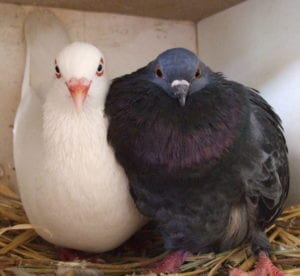
Source
Are Doves and Pigeons Considered Pests?
Yes & No.
Doves aren’t considered pests. They generally don’t nest in and around human habitations, although they have been known to do so occasionally.
For the most part, they are considered a game bird and sportsmen enjoy a good dove hunt as much as hunting for turkeys, pheasants, or any other wild game.
When it comes to pigeons, however, the situation is a bit different. Factories often have quite extensive problems with them nesting in the rafters of warehouses or the upper stories of a power plant.
It doesn’t take long before their population expands to the point where they become a genuine nuisance.
Their droppings discolor machinery, stairways, railings, pallets, crates, and anything else (or anyone else) unfortunate enough to be under when they “let go.” It leaves a pungent, unpleasant odor and the biochemicals in it can accelerate the deterioration of whatever it touches.
What Is The Cultural Significance of Doves and Pigeons?
Doves
For most of human history, doves have been considered symbols of peace. The iconic symbol of a dove carrying an olive branch in its mouth had its beginnings in the early chapters of the Book of Genesis in the Bible.
And he waited yet another seven days, and again he sent the dove out from the ark. Then the dove came to him in the evening, and behold, a freshly plucked olive leaf was in her mouth; and Noah knew that the waters had receded from the earth. [Genesis 8:10-11, NKJV]After the rain stopped, Noah sent out a dove but it came back. The next time he sent it out it came back carrying an olive branch in its beak, a symbol that God’s wrath – and the waters of the Flood – was abating, and peace was returning to the world.
The New Testament also has a dove that symbolizes peace and love. When Jesus went down to the Jordan river to be baptized by John, He came up out of the water and the Holy Spirit, in the shape of a dove, came down upon Him.
When He had been baptized, Jesus came up immediately from the water; and behold, the heavens were opened to Him, and He saw the Spirit of God descending like a dove and alighting upon Him. And suddenly a voice came from heaven, saying, “This is My beloved Son, in whom I am well pleased.” [Matthew 3:16-17, NKJV]That powerful imagery from these two events has stayed with us ever since and has been used in peace movements all over the world even by those who reject the Biblical story of the Flood and Jesus.
There is even a book entitled Doves and Diplomats that is dedicated to the subject.
Pigeons
Despite their many similarities, pigeons occupy a somewhat lower position in the, ahem, pecking order, than doves do. There are Mesopotamian cuneiform tablets that are over 5000 years old showing pigeons being domesticated and raised for food.
They have also been used in commerce, and by the military, to carry important messages back and forth. Early references to pigeons being used to carry messages date back to 2500 B.C.
The Roman Empire used pigeons for this purpose, as did the ancient Greeks. Whereas doves are seen more like symbols, pigeons are more often viewed as work animals or food.
Pigeons have often been housed in structures referred to as dovecotes, essentially a hen house for pigeons. These birdhouses ranged from crude, thatch-covered huts to clay pot-shaped buildings to ornate structures designed to hold thousands of birds.
Pigeons were domesticated not only for food and for its ability to “return home” but also for sport.
Pigeon racing has a long and storied history, as do various forms of falconry and pigeon killing. With the advent of guns, sports shooting of pigeons quickly gained popularity.
Huge numbers of pigeons would be captured, then released all at once in front of a crowd of hunters who shot them at point-blank range.
“Clay pigeons” were derived from this practice when the availability of live pigeons dwindled through over-hunting.
How Can You Control Pigeons?
Doves don’t provide nearly the nuisance level of activity that their larger pigeon cousins do, so this section will focus mainly on pigeons.
As stated earlier, they have a regrettable habit of infesting factories and large buildings then pooping all over them, producing an unsightly mess and a health hazard.
One of the ways PCO’s (Pest Control Operators) defend against pigeons is with the use of anti-bird spikes. Many of them are actually called pigeon control spikes, which tells you how often they’re the culprit in these situations.
These spikes can be laid out on girders and ledges where pigeons like to nest. They can’t land without getting stabbed or hurting their feet so they eventually give up and fly away somewhere else.
A second way PCO’s control pigeon populations is through live trapping. Bird traps are set out with bait corn in them and the doors wired open so they won’t close.
After the pigeons get used the traps and get used to going in and out without harm, then the PCO unwires the doors and lets the traps capture the pigeons. Once the trap is full the PCO collects the birds and transports them away for release back into the wild.
The problem here is obvious; pigeons, with their natural homing ability, quickly return to their “home” in the factory or warehouse and you’re right back to square one.

The only permanent solution is to kill them with poisoned bait. The PCO does essentially the same thing as before with the live trapping, only this time without a trap.
Unpoisoned bait is put out for a week or so to acclimate the birds to being feed at a certain place. Once they’re feeding freely on the safe bait, the poisoned bait is substituted and the pigeons will go on eating it as usual. Very quickly they’ll all be dead.
Frequently Asked Questions
Is it safe to ship doves across the country for a wedding release?
Yes. Dove release companies do this all the time without any danger to the birds. Once released, the birds immediately fly back home again.
What should I do if I find an injured dove or pigeon?
As with any wild animal that is injured, be careful not to let them bite or scratch you. They’re in scared and in pain.
They won’t understand that you’re trying to help them and will fight to escape. Contact a local veterinarian for help on capturing the bird.
Is it okay to feed pigeons and doves?
Yes and no. It’s not illegal to feed them, but you’ll definitely be encouraging them to gather for a daily feeding, which increases the amount of bird poop in the area.
They can also get quite noisy when they’re squabbling over food, which might upset your neighbors. It might not be against the law to feed them, but it might be against good manners.
What should I feed pigeons and doves?
Birdseed for doves and pigeons is available in 6-25 pound bags. Rather than putting it in a bird feeder as people do with smaller birds, spread it out across your backyard.
If you feed them at the same time every day it won’t be long before they’ll be out there waiting for you when it’s time.
About Pigeon Patrol:
Pigeon Patrol Products & Services is the leading manufacturer and distributor of bird deterrent (control) products in Canada. Pigeon Patrol products have solved pest bird problems in industrial, commercial, and residential settings since 2000, by using safe and humane bird deterrents with only bird and animal friendly solutions. At Pigeon Patrol, we manufacture and offer a variety of bird deterrents, ranging from Ultra-flex Bird Spikes with UV protection, Bird Netting, 4-S Gel and the best Ultrasonic and audible sound devices on the market today.
Contact us at 1- 877– 4– NO-BIRD, (604) 585-9279 or visit our website at www.pigeonpatrol.ca
Bird Gone, Pigeon Gone, Seagull Gone, Pigeon problems, 1-877-4NO-BIRD, 4-S Gel, Bird Control, Pigeon Control, bird repellent,, sonic bird repellent, stainless steel , bird spikes Vancouver, Ultra Sonic Bird Control, Bird Netting, Canada bird deterrents, Pigeon Pests, B Gone Pigeon, Pigeon Patrol, pest controller, pest control operator, pest control technician, Pigeon Control Products, humane pigeon, pigeon deterrents, pigeon traps, Pigeon repellents, Sound & Laser Deterrents, wildlife control, raccoon, skunk, squirrel deterrent, De-Fence Spikes, Dragons Den, Canada bird spikes, Canada pigeon, pigeon control, pigeon patrol, pigeon. Kill pigeons, crow, starling, Pigeon Habitat, Pigeon identifications,
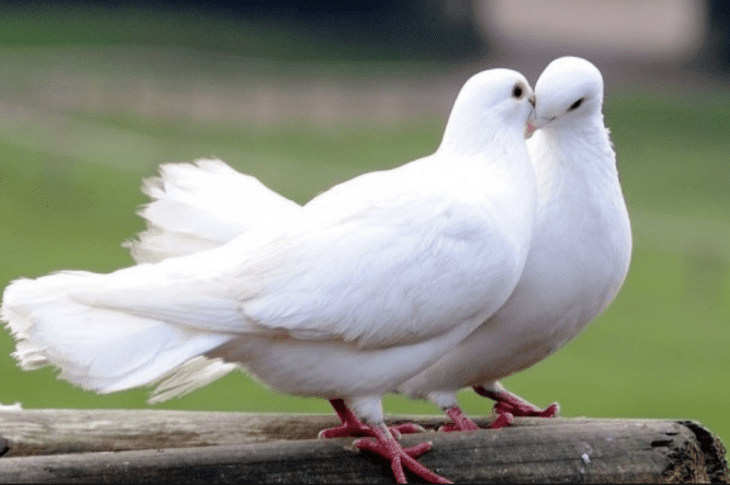
by Pigeon Patrol | Nov 4, 2020 | Columbidae, Doves
What Do Doves Eat
Pigeons and doves eat a variety of grains, seeds, greens, berries, fruits, and will occasionally eat insects, snails and earthworms in the wild.
General Information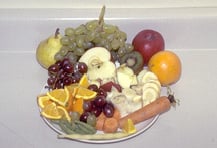
Our knowledge of bird nutrition is constantly evolving. This is due both to heightened awareness of the importance of nutrition and to increased research into birds different needs. As with all other animals, birds need a proper balance of carbohydrates, proteins, fat, vitamins, minerals and water. Different species of birds often require different foods.
Should I be concerned about what my doves eat?
Nutrition is commonly neglected with pet birds. You should discuss the nutrition of your pet pigeon or dove with your veterinarian! Too often owners assume they are feeding a proper diet to their pigeon or dove when in fact they are not! This is a common reason for many health problems. It is important to continually strive to improve your bird’s diet. This involves constantly educating yourself and a certain degree of common sense. It is not sufficient to feed a pigeon or dove just to maintain life; instead, your goal should be to help it thrive and flourish. Your bird’s health depends on how well it is fed.
What does my dove naturally eat?
Pigeons and doves eat a variety of grains, seeds, greens, berries, fruits, and will occasionally eat insects, snails and earthworms in the wild.
What should I feed them?
- A well balanced diet must be maintained at all times. Consult your veterinarian if encountering any problems with diet or the health of the bird.
Seeds
Formulated pigeon seed diets are available. A commercial diet contains mixed seeds and grains, vegetables and some are enriched with brewer’s yeast plus vitamins and minerals. Different diet formulations exist for performance birds, resting birds and breeding birds.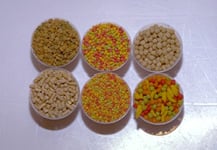
Pigeons are susceptible to calcium deficiency from eating only seeds. Seeds should only be 50% of a balanced diet, never the entire diet.
“Different diet formulations exist for performance birds, resting birds and breeding birds.”
Pelleted Diets
“Pellets should ideally represent approximately 50% of a pigeon’s diet.”
Pellets have been developed to meet all your bird’s nutritional needs. Hand raised babies are the easiest to start on a pelleted diet. Pellets are the ideal diet, therefore you are encouraged to slowly wean seed eating birds onto a pelleted diet. Pellets should ideally represent approximately 50% of a pigeon’s diet. There are many good brands of pelleted foods in the market place.
Fruits and Vegetables
Finely chopped vegetables and greens plus some fruit should be offered as part of the daily diet. Pale vegetables, with a high water composition (i.e. iceberg or head lettuce, celery) offer very little nutritional value. Avocado is reported to be potentially toxic.
Fruits and vegetables must be washed thoroughly to remove chemicals. Cut them into manageable pieces depending on the size of the bird. It is not necessary to take the skin off. Offer fruits and vegetables in a separate dish. If your bird appears to develop a particular fancy for one food item, reduce its volume or stop feeding it temporarily to promote the eating of other foods.
Treat your bird like a small child; offer a small piece of a variety of food items daily and never stop trying. A well balanced diet must be maintained at all times.
Water
Fresh clean water must be available at all times. Depending on the quality of your tap water, you might consider the use of bottled water. Dishes must be cleaned thoroughly every day with soap and water.
Will my bird have any different needs throughout its life?
Birds that are extremely young, stressed, injured, laying eggs or raising young may have certain special requirements. There are specially formulated pelleted foods available for birds with specific nutritional requirements. Consult your veterinarian regarding these situations.
Does my pigeon or dove need extra vitamins, minerals or amino acids?
Your veterinarian can help you assess your bird’s diet and its particular needs. One expert suggests that a pigeon eating 50% of its diet in the form of pelleted food may not need supplements. Specific vitamins or minerals may be more important at various times during a pigeon or dove’s life (e.g., calcium supplements during egg laying)). Calcium supplements are available if your pigeon is determined to be deficient.
“Mix these products in water or preferably apply directly onto moist food.”
Powdered supplements, such as Nekton® (by Nekton-Produkte), Quiko® or Prime® (by Hagen), are often regarded as more stable. Mix these products in water or preferably apply directly onto moist food. Placing these powders on seeds or dried foods is of little value since it will ultimately end up on the bottom of the food dish and not in the bird.
Does my Dove need gravel or grit?
Controversy exists over the need for gravel. It was believed that grit was necessary for the mechanical breakdown of food in the gizzard as an aid to digestion. Birds seem to do fine without grit. Most pigeons are offered a small amount of grit, crushed eggshell or oyster shell. Some birds will in fact have problems if grit is over eaten.
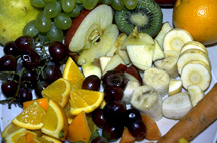 What pointers should I remember about feeding my Dove?
What pointers should I remember about feeding my Dove?
- Always monitor the amount of food eaten every day by each bird.
- Offer fresh water every day.
- Offer a variety of fresh foods every day.
- Offer fresh fruits and vegetables every day
- Clean all food and water dishes daily.
- No to a food item one day does not mean no forever – KEEP TRYING!
Other Items Your Doves Should Eat:
- Fruits like Apples, Bananas, Pears, Cherries, Peaches, Blueberries
- Vegetables like Bok Choy, Peppers, Lettuce, Cabbage, Carrots, Brussel Sprouts, Potato
Source
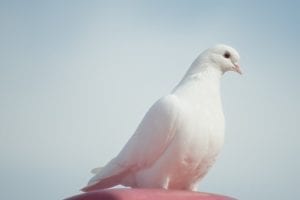
About Pigeon Patrol:
Pigeon Patrol Products & Services is the leading manufacturer and distributor of bird deterrent (control) products in Canada. Pigeon Patrol products have solved pest bird problems in industrial, commercial, and residential settings since 2000, by using safe and humane bird deterrents with only bird and animal friendly solutions. At Pigeon Patrol, we manufacture and offer a variety of bird deterrents, ranging from Ultra-flex Bird Spikes with UV protection, Bird Netting, 4-S Gel and the best Ultrasonic and audible sound devices on the market today.
Contact us at 1- 877– 4– NO-BIRD, (604) 585-9279 or visit our website at www.pigeonpatrol.ca
Bird Gone, Pigeon Gone, Seagull Gone, Pigeon problems, 1-877-4NO-BIRD, 4-S Gel, Bird Control, Pigeon Control, bird repellent,, sonic bird repellent, stainless steel , bird spikes Vancouver, Ultra Sonic Bird Control, Bird Netting, Canada bird deterrents, Pigeon Pests, B Gone Pigeon, Pigeon Patrol, pest controller, pest control operator, pest control technician, Pigeon Control Products, humane pigeon, pigeon deterrents, pigeon traps, Pigeon repellents, Sound & Laser Deterrents, wildlife control, raccoon, skunk, squirrel deterrent, De-Fence Spikes, Dragons Den, Canada bird spikes, Canada pigeon, pigeon control, pigeon patrol, pigeon. Kill pigeons, crow, starling, Pigeon Habitat, Pigeon identifications,

 Widcombe Manor Farm Dovecote
Widcombe Manor Farm Dovecote
 Ancient Dovecote at Embleton
Ancient Dovecote at Embleton
 Much Marcle Dovecote
Much Marcle Dovecote
 Breeding Cubicles,
Breeding Cubicles, Cross-section of
Cross-section of Dovecote at Godminster
Dovecote at Godminster
 Dovecote at Weetwood Hall
Dovecote at Weetwood Hall
 Dovecote at Kings Pyon
Dovecote at Kings Pyon
 Bailiffscourt Dovecote
Bailiffscourt Dovecote


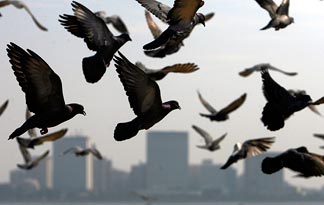







 What pointers should I remember about feeding my Dove?
What pointers should I remember about feeding my Dove?